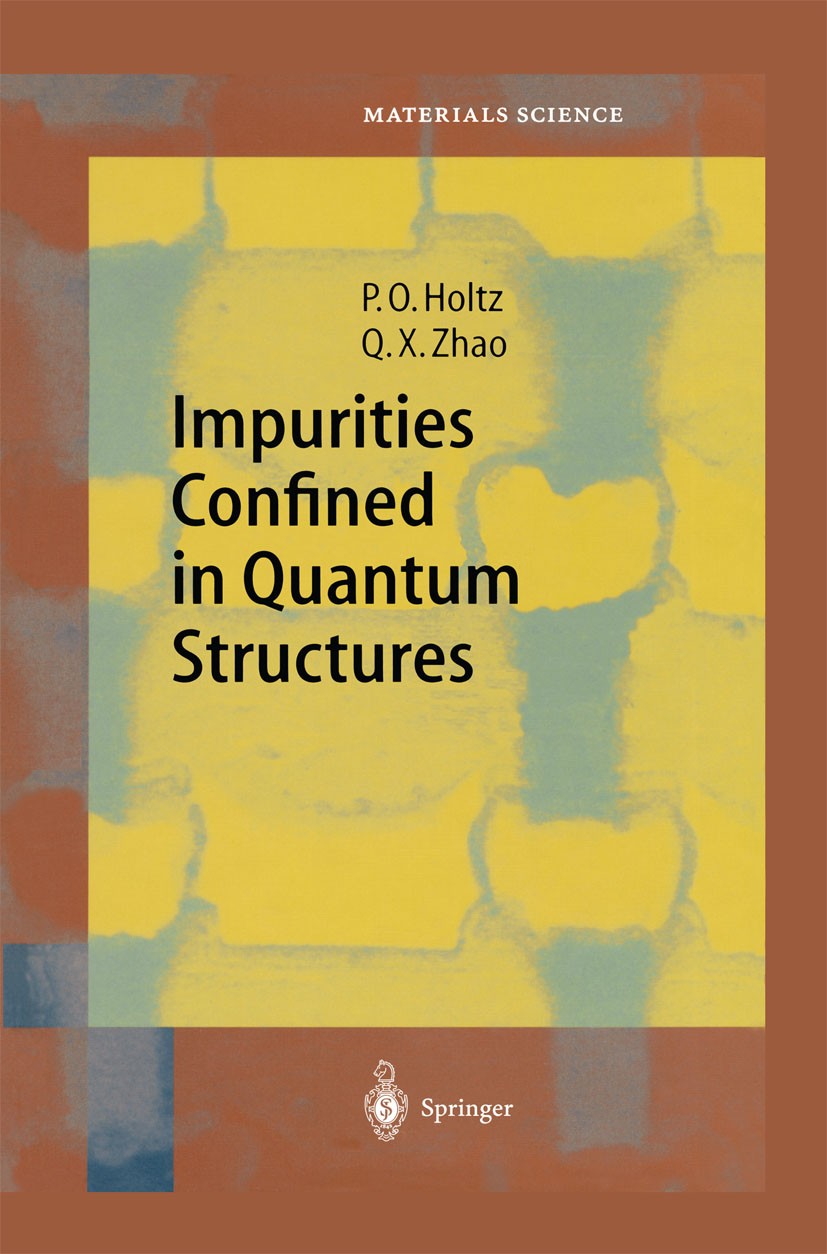| 书目名称 | Impurities Confined in Quantum Structures | | 编辑 | Per Olof Holtz,Qing Xiang Zhao | | 视频video | http://file.papertrans.cn/463/462876/462876.mp4 | | 概述 | Includes supplementary material: | | 丛书名称 | Springer Series in Materials Science | | 图书封面 |  | | 描述 | The dramatic impact of low dimensional semiconductor structures on c- rent and future device applications cannot be overstated. Research over the last decade has highlighted the use of quantum engineering to achieve p- viously unknown limits for device performance in research laboratories. The modi?ed electronic structure of semiconductor quantum structures results in transport and optical properties, which di?er from those of constituent bulk materials. The possibility to tailor properties, such as bandgap, strain, band o?set etc. , of two-dimensional (2D) semiconductors, e. g. quantum wells, for speci?c purposes has had an extensive impact on the electronics, which has resulted in a dramatic renewal process. For instance, 2D structures are today used in a large number of high speed electronics and optoelectronic appli- tions (e. g. detectors, light emitting diodes, modulators, switches and lasers) and in daily life, in e. g. LED-based tra?c lights, CD-players, cash registers. The introduction of impurities, also in very small concentrations, in a semiconductor can change its optical and electrical properties entirely. This attribute of the semiconductor is utilized in the manifol | | 出版日期 | Book 2004 | | 关键词 | Confinement; Doping; Electronic structure; Impurity; Optical characterization; Quantum structure; Semicond | | 版次 | 1 | | doi | https://doi.org/10.1007/978-3-642-18657-8 | | isbn_softcover | 978-3-642-62228-1 | | isbn_ebook | 978-3-642-18657-8Series ISSN 0933-033X Series E-ISSN 2196-2812 | | issn_series | 0933-033X | | copyright | Springer-Verlag Berlin Heidelberg 2004 |
The information of publication is updating

|
|
 |Archiver|手机版|小黑屋|
派博传思国际
( 京公网安备110108008328)
GMT+8, 2025-11-19 23:51
|Archiver|手机版|小黑屋|
派博传思国际
( 京公网安备110108008328)
GMT+8, 2025-11-19 23:51


